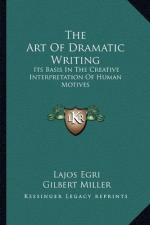
|
| Name: _________________________ | Period: ___________________ |
This test consists of 5 multiple choice questions, 5 short answer questions, and 10 short essay questions.
Multiple Choice Questions
1. Whom is Christine in love with in "A Doll's House"?
(a) Dr. Rank.
(b) Nora.
(c) Torvald.
(d) Krogstad.
2. Whom was Plato a student of?
(a) Aristotle.
(b) Socrates.
(c) Xenophanes.
(d) Heraclitus.
3. The Sophists taught what, meaning quality or excellence as the highest value and determinant of one's actions in life?
(a) Accomplishment.
(b) Arete.
(c) Virtue.
(d) Wealth.
4. What does Lajos Egri claim to be the premise of King Lear?
(a) "Ruthless ambition leads to its own destruction."
(b) "Blind trust leads to destruction."
(c) "Love rewards death."
(d) "Jealousy destroys itself and the object of its love."
5. What term refers to a person who is opposed to, struggles against, or competes with the hero of a work of drama or literature?
(a) Obligation.
(b) Protagonist.
(c) Antagonist.
(d) Villain.
Short Answer Questions
1. What term refers to a person represented in a drama or story?
2. Who wrote "Oedipus Rex"?
3. Who is the father of Oedipus?
4. What Classic Greek philosopher claimed character was secondary to action?
5. Where has Nora arrived from in the beginning of "A Doll's House"?
Short Essay Questions
1. What does the author claim is the one key factor in obtaining conflict?
2. What is the author's premise in opening Book II: Character, Chapter 1?
3. What example does the author give to explain the unity of opposites?
4. What does the author assert in Book II: Character, Chapter 5: Strength of Will in a Character about the need to fight?
5. How does Egri assert a writer may begin a play without a premise?
6. What does Egri say about the writer's doubts about a character's development?
7. What does the author assert of writers who decide to write of their own experiences?
8. How is the antagonist defined and described by the author?
9. What are the three dimensions the author describes as "bone structure"?
10. What does orchestration mean? How is it accomplished?
|
This section contains 840 words (approx. 3 pages at 300 words per page) |

|




